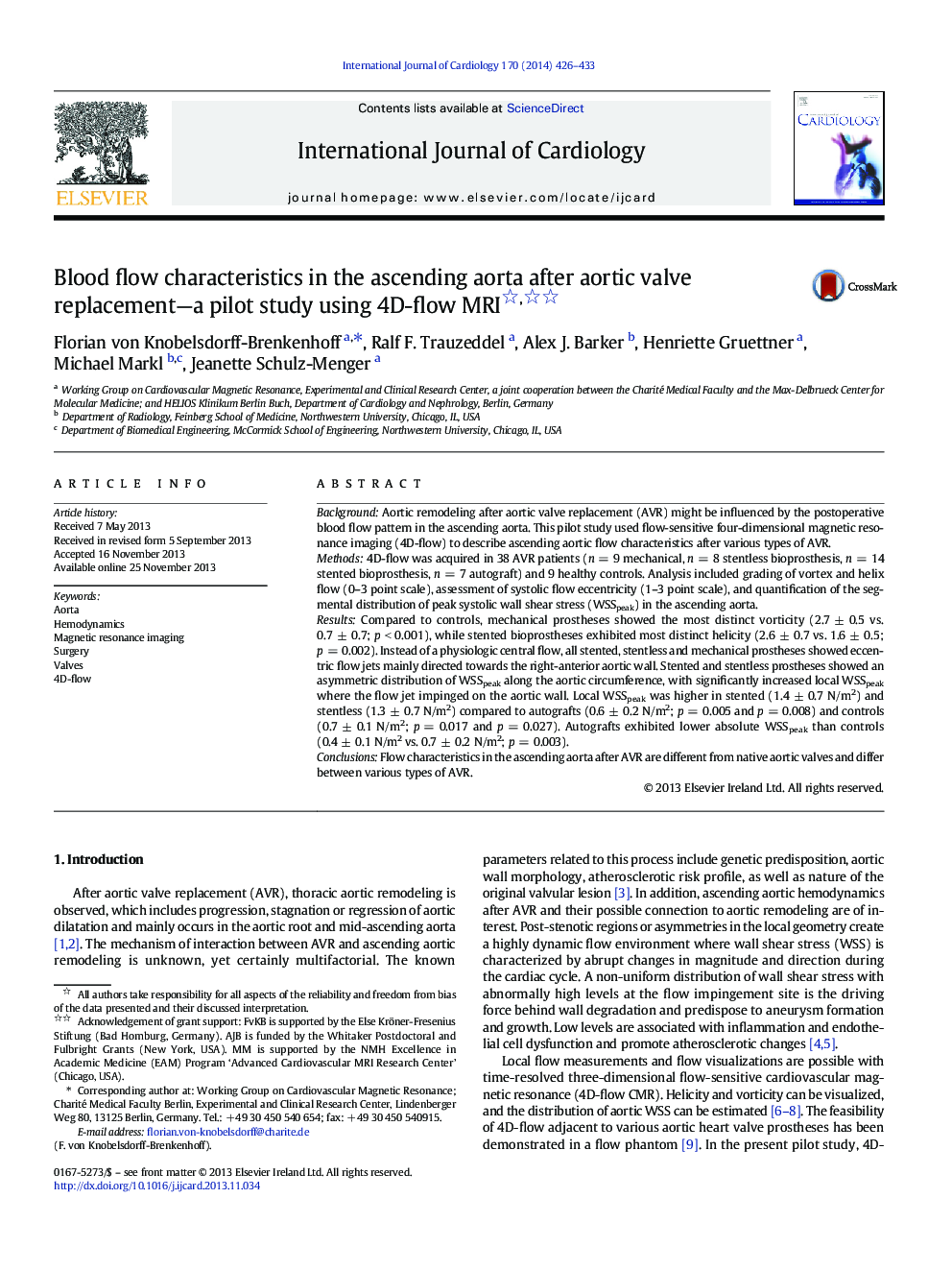| Article ID | Journal | Published Year | Pages | File Type |
|---|---|---|---|---|
| 5973054 | International Journal of Cardiology | 2014 | 8 Pages |
BackgroundAortic remodeling after aortic valve replacement (AVR) might be influenced by the postoperative blood flow pattern in the ascending aorta. This pilot study used flow-sensitive four-dimensional magnetic resonance imaging (4D-flow) to describe ascending aortic flow characteristics after various types of AVR.Methods4D-flow was acquired in 38 AVR patients (n = 9 mechanical, n = 8 stentless bioprosthesis, n = 14 stented bioprosthesis, n = 7 autograft) and 9 healthy controls. Analysis included grading of vortex and helix flow (0-3 point scale), assessment of systolic flow eccentricity (1-3 point scale), and quantification of the segmental distribution of peak systolic wall shear stress (WSSpeak) in the ascending aorta.ResultsCompared to controls, mechanical prostheses showed the most distinct vorticity (2.7 ± 0.5 vs. 0.7 ± 0.7; p < 0.001), while stented bioprostheses exhibited most distinct helicity (2.6 ± 0.7 vs. 1.6 ± 0.5; p = 0.002). Instead of a physiologic central flow, all stented, stentless and mechanical prostheses showed eccentric flow jets mainly directed towards the right-anterior aortic wall. Stented and stentless prostheses showed an asymmetric distribution of WSSpeak along the aortic circumference, with significantly increased local WSSpeak where the flow jet impinged on the aortic wall. Local WSSpeak was higher in stented (1.4 ± 0.7 N/m2) and stentless (1.3 ± 0.7 N/m2) compared to autografts (0.6 ± 0.2 N/m2; p = 0.005 and p = 0.008) and controls (0.7 ± 0.1 N/m2; p = 0.017 and p = 0.027). Autografts exhibited lower absolute WSSpeak than controls (0.4 ± 0.1 N/m2 vs. 0.7 ± 0.2 N/m2; p = 0.003).ConclusionsFlow characteristics in the ascending aorta after AVR are different from native aortic valves and differ between various types of AVR.
